Related Research Articles
Software art is a work of art where the creation of software, or concepts from software, play an important role; for example software applications which were created by artists and which were intended as artworks. As an artistic discipline software art has attained growing attention since the late 1990s. It is closely related to Internet art since it often relies on the Internet, most notably the World Wide Web, for dissemination and critical discussion of the works. Art festivals such as FILE Electronic Language International Festival, Transmediale (Berlin), Prix Ars Electronica (Linz) and readme have devoted considerable attention to the medium and through this have helped to bring software art to a wider audience of theorists and academics.

Electronic art is a form of art that makes use of electronic media. More broadly, it refers to technology and/or electronic media. It is related to information art, new media art, video art, digital art, interactive art, internet art, and electronic music. It is considered an outgrowth of conceptual art and systems art.

UBERMORGEN.COM is a Swiss-Austrian-American artist duo founded in 1995 and consisting of lizvlx and Luzius Bernhard. They live and work in Basel, S-chanf near St. Moritz and in Vienna, where both are professors at the University of Applied Arts Vienna.
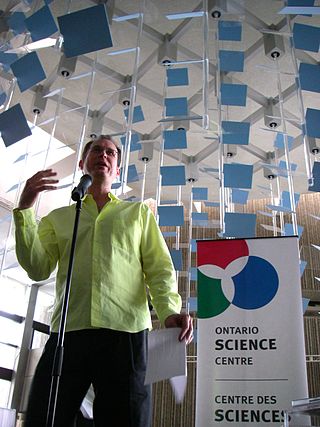
David Rokeby is a Canadian artist who has been making works of electronic, video and installation art since 1982. He lives with his wife, acclaimed pianist Eve Egoyan, in Toronto, Canada.
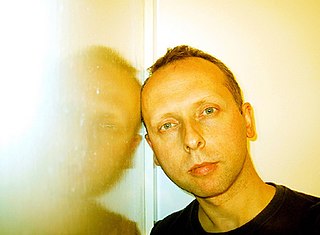
Robin Rimbaud is a British electronic musician who works under the name Scanner due to his use of cell phone and police scanners in live performance. He is also a member of the band Githead with Wire's Colin Newman and Malka Spigel and Max Franken from Minimal Compact.
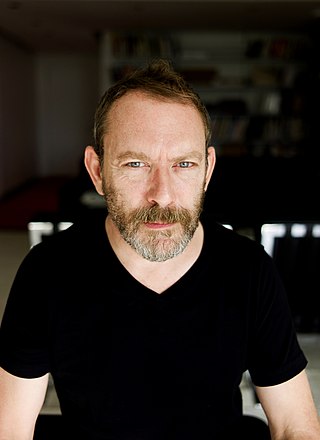
Liam Gillick is a British artist who lives and works in New York City. Gillick deploys multiple forms to make visible the aesthetics of the constructed world and examine the ideological control systems that have emerged along with globalization and neoliberalism. He utilizes materials that resemble everyday built environments, transforming them into minimalist abstractions that deliver commentaries on social constructs, while also exploring notions of modernism.
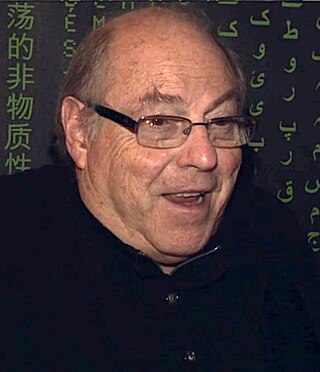
Roy Ascott FRSA is a British artist, who works with cybernetics and telematics on an art he calls technoetics by focusing on the impact of digital and telecommunications networks on consciousness. Since the 1960s, Ascott has been a practitioner of interactive computer art, electronic art, cybernetic art and telematic art.
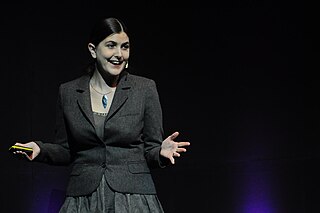
Honor Harger is a curator and artist from New Zealand. Harger has a particular interest in artistic uses of new technologies. She is currently the executive director of the ArtScience Museum in Singapore.

James Powderly is an American artist, designer and engineer whose work has focused on creating tools for graffiti artists and political activists, designing robots and augmented reality platforms, and promoting open source culture.

Max Hattler is a German video artist and experimental filmmaker. He created the kaleidoscopic political short films "Collision" (2005) and "Spin" (2010), abstract stop motion works "Shift" (2012) and "AANAATT" (2008), and psychedelic animation loops "Sync", "1923 aka Heaven" and "1925 aka Hell" (2010).
Gregor Muir is Director of Collection, International Art, at Tate, having previously been the Executive Director of the Institute of Contemporary Arts in London from 2011 to 2016. He was the director of Hauser & Wirth, London, at 196a Piccadilly, from 2004 to 2011. He is also the author of a 2009 memoir in which he recounts his direct experience of the YBA art scene in 1990s London.
Semiconductor is UK artist duo Ruth Jarman and Joe Gerhardt. They have been working together for over twenty years producing visually and intellectually engaging moving image works which explore the material nature of our world and how we experience it through the lens of science and technology, questioning how these devices mediate our experiences. Their unique approach has won them many awards, commissions and prestigious fellowships including; SónarPLANTA 2016 commission, Collide @ CERN Ars Electronica Award 2015, Jerwood Open Forest 2015 and Samsung Art + Prize 2012. Exhibitions and screenings include; The Universe and Art, Mori Art Museum, Tokyo, Japan, 2016; Infosphere, ZKM, Karlsruhe, 2016; Quantum of Disorder, Museum Haus Konstruktiv, Zurich, 2015; Da Vinci: Shaping the Future, ArtScience Museum, Singapore, 2014; Let There Be Light, House of Electronic Arts, Basel 2013 ; Field Conditions, San Francisco Museum of Modern Art, 2012; International Film Festival Rotterdam, 2012; New York Film Festival: Views from the Avant Garde, 2012; European Media Art Festival, 2012; Worlds in the Making, FACT, Liverpool 2011 ; Earth; Art of a Changing World, Royal Academy of Arts, London, 2009 and Sundance Film Festival, 2009.

Internet art is a form of new media art distributed via the Internet. This form of art circumvents the traditional dominance of the physical gallery and museum system. In many cases, the viewer is drawn into some kind of interaction with the work of art. Artists working in this manner are sometimes referred to as net artists.
LAb[au] is an artist group founded 1997 in Brussels, Belgium with the aim to examine the influence of advanced technologies in the forms, methods and content of art. Members are: Manuel Abendroth and Jérôme Decock. Former members were: co-founder Naziha Mestaoui, Grégoire Verhaegen, Pieter Heremans ,Alexandre Plennevaux and Els Vermang.
Lia is an Austrian software artist. Born in Graz, she is now based in Vienna. Her work includes the early Net Art sites re-move.org and turux.at. In 2003 she co-curated the Abstraction Now exhibition at the Künstlerhaus Wien in Vienna, Austria. In 2003 Lia received an Award of Distinction in the Net Vision/Net Excellence Category for re-move.org.
Max Eastley is a British visual and sound artist. He is part of the Cape Farewell Climate Change project. He studied painting and graphic art at Newton Abbot Art School and then went on to gain a BA in Fine Art (1969–1972) at Middlesex University. He is a sculptor (kinetic), musician and composer. His primary instrument is a unique electro-acoustic monochord, developed from an aeolian sculpture. 'The Arc' consists of a single string stretched lengthwise across a long piece of wood which can be played with a bow, fingers or short glass rods. The end of the instrument has a microphone attached so the basic sound can be amplified, recorded and run through sound effect programs.
George Barber is a British video artist.

Ars Electronica Linz GmbH is an Austrian cultural, educational and scientific institute active in the field of new media art, founded in Linz in 1979. It is based at the Ars Electronica Center (AEC), which houses the Museum of the Future, in the city of Linz. Ars Electronica's activities focus on the interlinkages between art, technology and society. It runs an annual festival, and manages a multidisciplinary media arts R&D facility known as the Futurelab. It also confers the Prix Ars Electronica awards.
Kathy Rae Huffman is an American curator, writer, producer, researcher, lecturer and expert for video and media art. Since the early 1980s, Huffman is said to have helped establish video and new media art, online and interactive art, installation and performance art in the visual arts world. She has curated, written about, and coordinated events for numerous international art institutes, consulted and juried for festivals and alternative arts organisations. Huffman not only introduced video and digital computer art to museum exhibitions, she also pioneered tirelessly to bring television channels and video artists together, in order to show video artworks on TV. From the early 1990s until 2014, Huffman was based in Europe, and embraced early net art and interactive online environments, a curatorial practice that continues. In 1997, she co-founded the Faces mailing list and online community for women working with art, gender and technology. Till today, Huffman is working in the US, in Canada and in Europe.
References
- ↑ Olats, Leonardo. "Art and Climate Change". Cyclone.soc. Retrieved 16 March 2012.
- ↑ Data, Landscapes. "Art and Environment Project". Archived from the original on 12 August 2012. Retrieved 16 March 2012.
- ↑ "ARC". ARC. Retrieved 9 May 2024.
- ↑ Corby, Tom, "Materialising Data"https://www.arts.ac.uk/research/current-research-and-projects/materializing-data-embodying-climate-change
- ↑ File, Festival. "Prix Lux". Cyclone.soc. Retrieved 16 March 2012.
- ↑ Japan Media Arts, Festival. "Web Award". Cyclone.soc. Archived from the original on 8 August 2011. Retrieved 16 March 2012.
- ↑ Ars, Electronica. "Net Vision". Cyclone.soc. Retrieved 16 March 2012.
- ↑ Ars, Electronica. "Net Art". Reconnoitre. Archived from the original on 7 July 2012. Retrieved 16 March 2012.
- ↑ "Loop Reprise ?". Machida City Museum of Graphic Arts. Retrieved 16 March 2012.
- ↑ "Media Art Award". ZKM. Retrieved 16 March 2012.
- ↑ Tate, Online. "Browser Art". Reconnoitre. Retrieved 16 March 2012.
- ↑ Madrid Art Fair. "Arte Red". Archived from the original on 26 November 2007. Retrieved 17 March 2012.
- ↑ ICC, Tokyo. "Connecting Worlds". Cyclone.soc. Retrieved 16 March 2012.
- ↑ ISEA, Festival. "Istanbul" . Retrieved 17 March 2012.
- ↑ Transmediale, Festival. "Go Public". Gameboy_UltraF_UK. Archived from the original on 7 July 2012. Retrieved 16 March 2012.
- ↑ M, Kovskaya (Summer 2009). "The English Lounge". Art Review.
- ↑ G, Valentino (23 July 2010). "Arte e Natura". La Repubblica.
- ↑ A, Littledale (30 November 2010). "NewsTraces". The Guardian. London. Retrieved 17 March 2012.
- ↑ A, Ludovico (2009). "New Zealand Report". Neural IT (Spring, no.32).
- ↑ M, Gibbs (Summer 2009). "Sublime Mundanity". Art Monthly.
- ↑ C, Sadler (November 2007). "Perimeters, Boundaries and Borders". Artist's Newsletter.
- ↑ S, Healy (2002). "Software triffl Kunst im Gameboy_ultraF_uk". De-Bug Magazine (60).